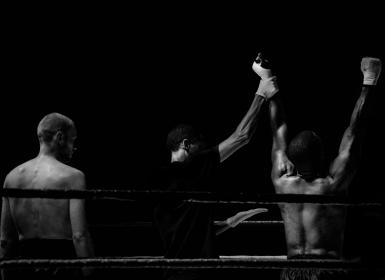The Power of Imagery
Using your mind to enhance your performance, return from injury, learn new skills, and motivate efforts towards goals are just some of the advantages that can be realized through the power of imagery. Imagery is the process of creating or recreating experiences in the mind using all of the senses. Since imagery is an internal process of the mind-body, there are only theories as to how imagery works. Basically, imagery “tricks” your body into believing it is actually doing what you imagine. In other words, imagery works because the body does not distinguish between images and real events. The more detailed the imagery is, the more realistic it will appear to the body, and thus the more powerful and effective it will be. Research has proven that physiological responses occur through thoughts (even without actions).
Practice Techniques for Imagery
1. Incorporate all five senses into your imagery
2. Include vivid details
3. Be positive
4. Focus on the process (not just the outcome)
5. Be patient and consistent
Gain the Mental Edge
Like physical skills and techniques, imagery too is a technique that develops with practice. Few athletes have ideal imagery when they first use it. In fact, beginners typically struggle with it initially even when they tell themselves they are doing great. Those who put the time and energy into imagery training will notice that they develop a mental edge over their competition. Start with something as simple as imagining your bed room at home; slowly add yourself, then start to manipulate your environment through changes. Remembering past performance experiences can also be very helpful — especially if you can incorporate all of the senses, and include feelings: excitement, anxiety, pride, etc.
Memory Editing
Every athlete has experienced a moment in performance when something didn’t turn out the way they had wanted. An athlete will likely replay this moment in their mind again and again and again trying to think of how different the entire outcome of their performance would have been had they just done “this one thing” correctly. Unfortunately, this negative imagery is only reinforcing the actions resulting in the negative outcome. Instead of just remembering it in this manner, use your imagery to “edit” this memory into the correct actions that would have led to the desired outcome. The chances of doing it correctly next time will increase dramatically.
Imagery and Recovery
Many athletes have used the power of imagery to help them heal from an injury and return to top form more quickly. When we imagine the injury healing (whether this is the strength of a tendon, the power of a movement, or the range of mobility) the body’s tissues respond. Doctors have been perplexed at the shorter recovery times and the improvements in injury with athletes who practice imagining their body healing itself. Similarly, when athletes imagine themselves performing their skills, the body responds by firing the muscle fibers into action and muscle memory is preserved. Athletes returning from injury using these skills are more confident, prepared, and in form — and they return much more quickly.
